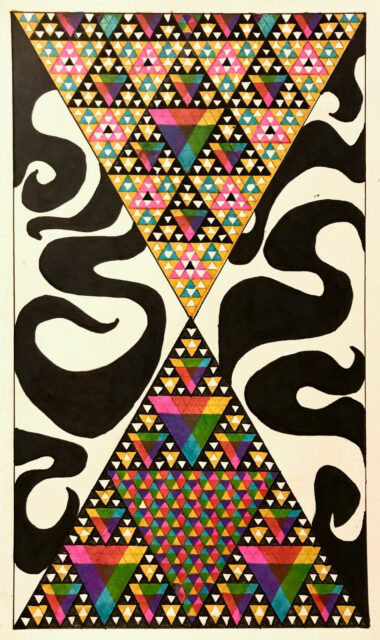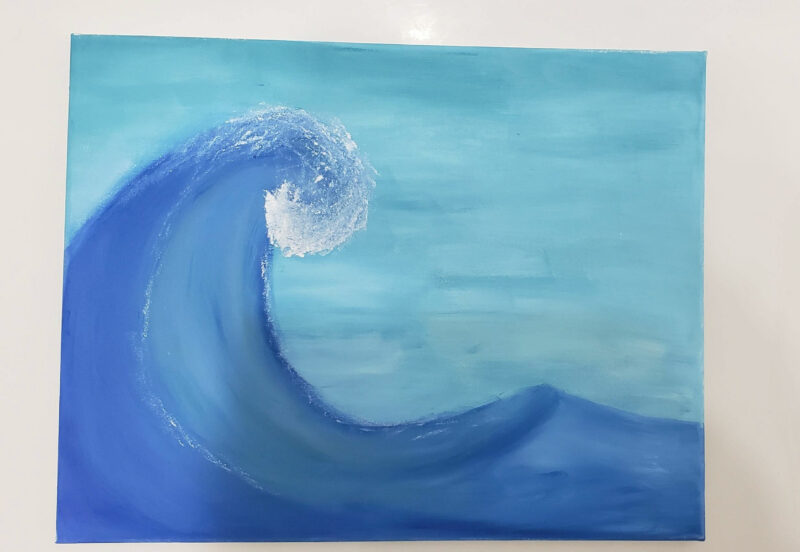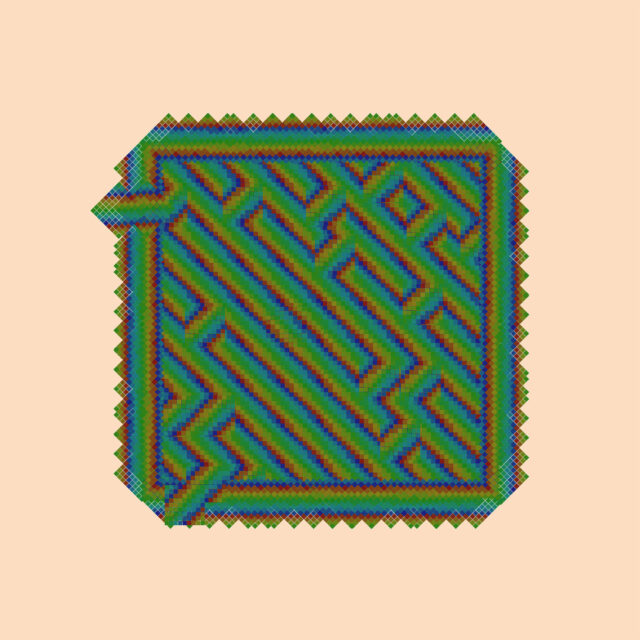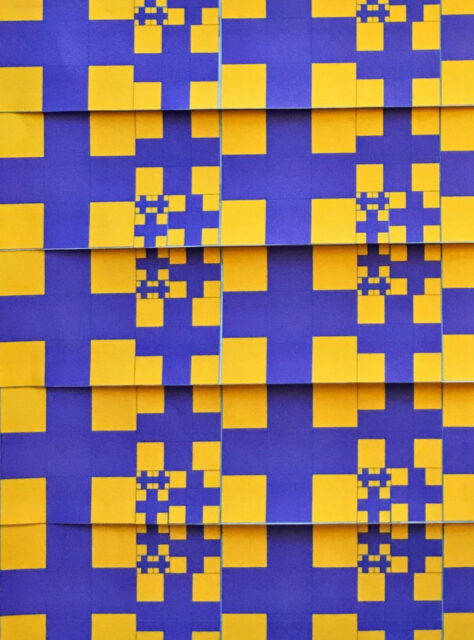
Students discover the beauty of math in new course
Math is often viewed as a difficult subject but there are ways to make math accessible and interesting to everyone. Dawson College did just that last semester by offering a new course entitled When Math Meets Art.
Claudia Farnesi, the first teacher of the course, shared a quote that inspired her from Swedish mathematician Gösta Mittag-Leffler: “The mathematician’s best work is art, a high perfect art, as daring as the most secret dreams of imagination, clear and limpid. Mathematical genius and artistic genius touch one another.”
Two years ago, the Math Department of Dawson College looked at creating complementary courses.
“My colleague, Garry Chu, approached me with his idea of creating a Math/Art/Music course,” recalled Claudia, who was chair at the time. “I immediately asked him if I could jump on board with a Dance component. I have been dancing since I was five years old, including a few years teaching as well. My Master’s thesis was entitled A Mathematical Contribution to Dance Notation, so I was definitely excited to come back to my roots in co-creating the course When Math Meets Art.”
Course description
According to the course outline, students explore the relationship between mathematics and the arts and study the relationship between music and numbers. They learn to recognize the use of symmetry and permutations behind the art of dance, and to appreciate architecture, paintings and stamps based on mathematical construction. During the course, students create an image of their own using mathematical patterns.
There were three components of the course: Math and Art, Architecture and Stamps; Math and Dance; and Math and Music. Upon completion, the students recognize the role of mathematics or computer science in contemporary society.
“Based on student feedback, they very much enjoyed the first two parts, but they were a little overwhelmed by the music section because music is already very technical on its own,” Claudia reported.
Exploring math and much more
Claudia gained a new interest in music by teaching the course and began playing piano. Some of her students have also developed a new interest in music. “I think that is what’s so great about a course like this,” she said. “Not only did the students gain an appreciation for mathematics, but some also discovered a new interest and hobby. It’s exactly the sort of multidisciplinary outcome we would want from such a course.”
The course brought a lot of joy to Claudia and her students during this dark period of the pandemic. “This course is incredible,” said Jennifer Beraldi Stein, a student in the Child Studies Profile of Social Science. “I learned things that I never thought I would learn, such as music. I had fun applying mathematical concepts in the arts and we also had fun dancing with math.”

Golden Wave: Student Jennifer Beraldi Stein painted a wave using the proportions from Fibonacci’s golden spiral.
Student feedback is positive
Jennifer enjoyed doing something other than readings and did not feel too far out of her comfort zone. “Math is everywhere in our lives, even in the small details, we just need to look for it,” she said.
Visual Arts student Simone Aslan liked the projects.” I really enjoyed math in high school,” she said. “Even though it wasn’t my forte, and, as much as I loved my art courses, I did sometimes miss the challenge that accompanies math.”
Simone said the projects forced her to apply the theories learned in class. “We had to apply all the knowledge learned in each unit into a project: an art piece for the art one, a piano piece for the music one, and a small movement-type project for the dance one,” she said. The course is “challenging but fun” and Simone would recommend it to other students.
Fellow student Hope Alexandra Steadman, who is in the Child Studies Profile of Social Science, also recommends the course for those who did well in Secondary IV math and “are looking for a small change of pace from essays or their other social science and art courses.” Hope loved the projects and the dynamics of the class.

Periodically Magic Maze: Student Simone Aslan generated a maze with a combination of magic squares and periodic tiling.
In the future
Claudia thinks future students would benefit from outings together when the course is taught after the pandemic. “I think it could have been very engaging to have three outings, for example, a nature walk, a dance show and an OSM concert,” she said. “I encouraged my students to do this on their own, and I know many of them did what they could within the COVID restraints, but it certainly could have created more exchanges if it was done as a group.”
When Math Meets Art allows students to see that math doesn’t always have be difficult or scary. “It creates a lot of interesting conversations,” said Claudia. “It also takes them out of their comfort zone. This can be mathematically related, but a lot of them were also very anxious about the dance portion of the course. They ultimately realized that it was not that bad, because I reassured them that dancing is simply a creative way of referring to body movements.”

Magically Golden Tiling: Student Mandy Tzu-Hsin produced a magic square, which she gradually increased in size in order to create Fibonacci’s golden rectangles. She used the result to generate a periodic tiling.
The people behind When Math Meets Art
The course developers were Garry Chu, Claudia Farnesi and George P. H. Styan. In the fall, George gave a presentation about the course at the International Conference on Applied Linear Algebra, Probability and Statistics (ALAPS 2020).
Dr. Ka Lok (Garry) Chu completed his PhD degree in the McGill Department of Mathematics and Statistics with supervision by George P. H. Styan and has been teaching at Dawson College for more than a decade. With Simo Puntanen and George P. H. Styan, Dr. Ka Lok Chu has published several research papers and has organized workshops at Dawson as well as the recent online course “When Math meets Art” (with Claudia Farnesi). He works as an ambassador to deliver mathematical concepts in an easy fashion, with the primary goal to help students understand basic principles. He explores well-known and interesting daily-life probability questions in his statistics classes. He explains in online lectures how to interpret timely statistical charts and different mathematical models concerning COVID-19. Dr. Ka Lok Chu believes now is an appropriate time to help students solve the mathematical mystery behind AI, or machine learning, based on statistical theory, linear algebra and calculus.
Claudia Farnesi has been teaching at Dawson College since January 2007. During that time, she has worked in creating a more active and engaging classroom for her non-science mathematics students. She has served on various Department committees, as well as Department Assistant Chairperson and as Department Chairperson. An avid dancer since the age of five, and always in need of a creative outlet to complement her more logical side, Claudia Farnesi’s Master’s thesis, A Mathematical Contribution to Dance Notation, allowed her to fuse two of her passions: mathematics and dance. Recently, she came back to these roots by co-creating the new course When Math Meets Art.
Dr. George P. H. Styan is Professor Emeritus in the Department of Mathematics and Statistics, McGill University. He has a PhD degree in Mathematical Statistics from Columbia University, New York City (1969) and an Honorary PhD from the Faculty of Economics and Administration, Tampere University, Finland (2000). His main research interest lies on matrix methods in statistics, with particular emphasis on linear statistical models. He was Editor of Chance Magazine (1996–1998) and Managing Editor of The Canadian Journal of Statistics (1979–1984, 1999–2009). Following retirement from McGill University in 2005, George’s research has been in recreational mathematics with special emphasis on magic squares and mathematical philately. Jointly with Simo Puntanen, George is a founding member of the series of the International Workshop on Matrices and Statistics.


